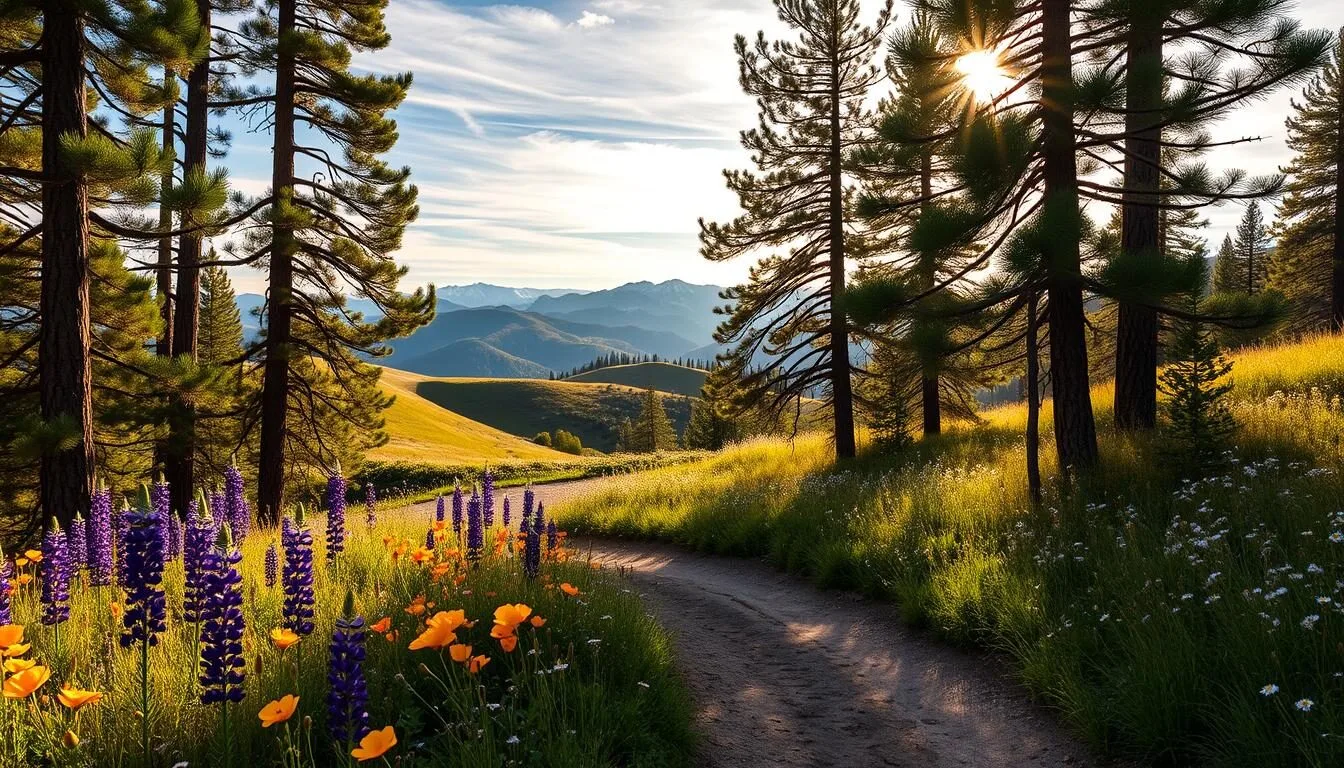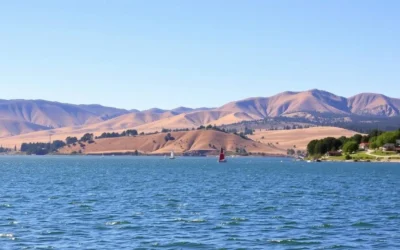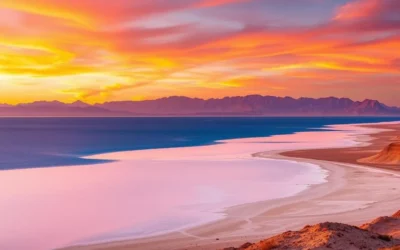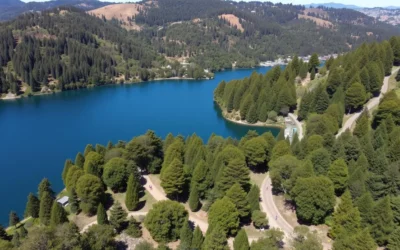✓ Accommodations ✓ Flights ✓ Rental Cars
Did you know that the Sierra Foothills region boasts a unique climate that differs significantly from both the coastal areas of California and the higher elevations of the Sierra Nevada mountains? This distinct weather pattern makes it an attractive destination for travelers seeking a diverse experience.
Understanding the weather conditions is crucial to making the most of your visit. The region experiences four distinct seasons, each offering different advantages and challenges for visitors. Whether you’re interested in wine tasting, exploring gold country, or enjoying outdoor recreation, timing your visit right can make all the difference.
Understanding the Sierra Foothills Climate
The Sierra Foothills region boasts a unique climate influenced by its geographical position. Situated between California’s Central Valley and the Sierra Nevada mountains, this area experiences a blend of climatic conditions from both neighboring regions.
Geographic Location and Its Impact on Weather
The Sierra Foothills occupy a transitional zone that creates a distinctive climate, combining elements of both the Central Valley and the Sierra Nevada mountains. Elevation plays a crucial role in determining weather patterns, with higher elevations experiencing cooler temperatures and more precipitation. The foothills act as a barrier that affects air movement and precipitation patterns across the region.
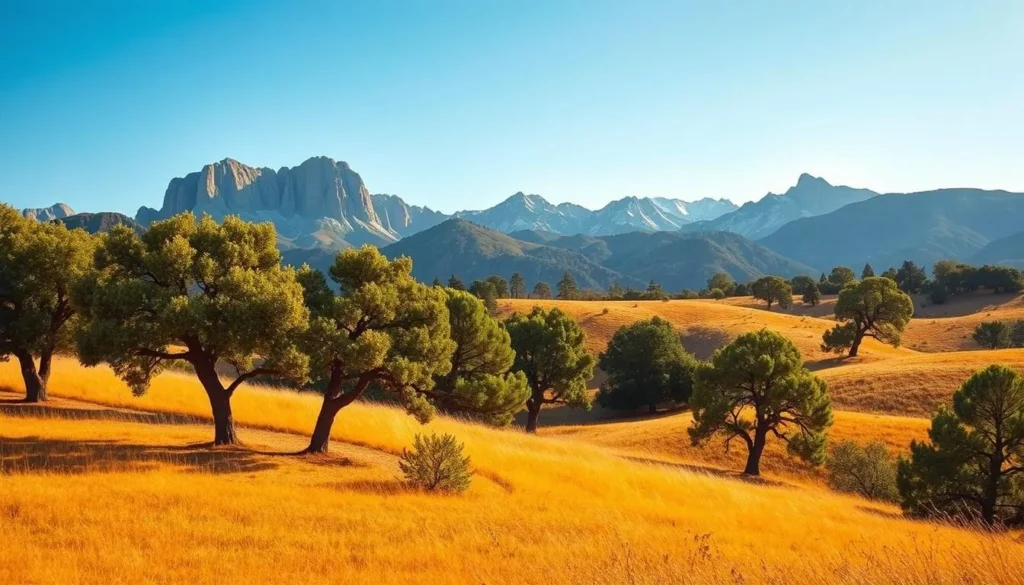
Microclimate Variations Within the Region
Unlike the Central Valley’s flat terrain, the rolling topography of the Sierra Foothills creates numerous microclimates. These microclimates result in significant weather variations even between towns just miles apart. Factors such as north-facing slopes retaining moisture longer than south-facing slopes and river canyons channeling air movement contribute to these variations. Understanding these microclimates can help you choose destinations within the foothills based on your weather preferences.
Sierra Foothills, California: Best Months for a Weather-Savvy Trip
For a weather-savvy trip to the Sierra Foothills, it’s essential to know the ideal months to visit. The region’s climate varies significantly across different seasons, impacting the overall travel experience.
Spring and Fall: The Sweet Spots
The spring (March to May) and fall (September to November) seasons are considered the best times to visit the Sierra Foothills. During these periods, the weather is generally mild, with temperatures in the 60s Fahrenheit, making them perfect for outdoor activities. These shoulder seasons offer fewer crowds and a wide range of events, enhancing your overall travel experience. Spring brings wildflower blooms and rushing waterfalls, while fall offers vibrant foliage and harvest activities.
Weather Considerations for Different Activities
Your ideal visiting time may vary depending on your planned activities and personal preferences. For instance, wine enthusiasts might prefer the fall harvest season, while hikers might enjoy spring’s moderate temperatures and green landscapes. Gold country explorers can visit year-round, but spring and fall offer the most comfortable conditions for walking tours. Water activities on rivers and lakes are best enjoyed from late spring through early fall when water levels and temperatures are optimal.
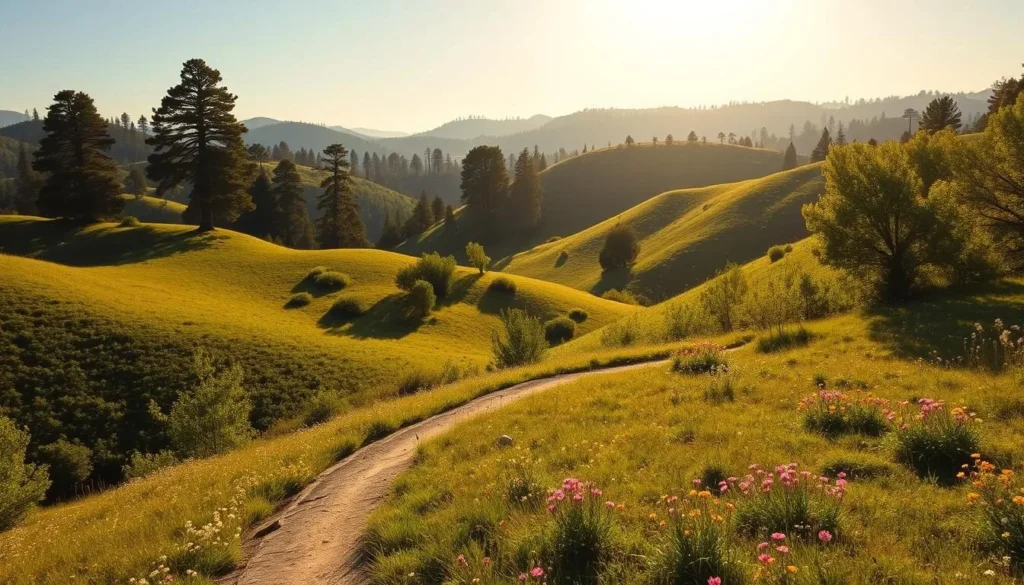
Spring in the Sierra Foothills (March-May)
Spring in the Sierra Foothills is a time of renewal, characterized by warming temperatures and the blossoming of wildflowers. As the region transitions from winter, the landscape transforms into a vibrant tapestry of colors and life.
Temperature and Precipitation Patterns
During spring, the Sierra Foothills experience a gradual warming trend from March through May. March temperatures typically range from 40-65°F, with occasional rainfall and the possibility of late-season snow at higher elevations.
| Month | Temperature Range (°F) | Precipitation |
|---|---|---|
| March | 40-65 | Occasional rainfall |
| April | 45-70 | Decreasing precipitation |
| May | 50-80 | Minimal rainfall |
Spring Blooms and Natural Beauty
Spring is characterized by vibrant wildflower displays throughout the foothills, with peak blooming usually occurring in April. The melting snow from the Sierra Nevada creates spectacular waterfall displays in the numerous river canyons, and the lush green hillsides provide a stunning backdrop for photography and scenic drives.
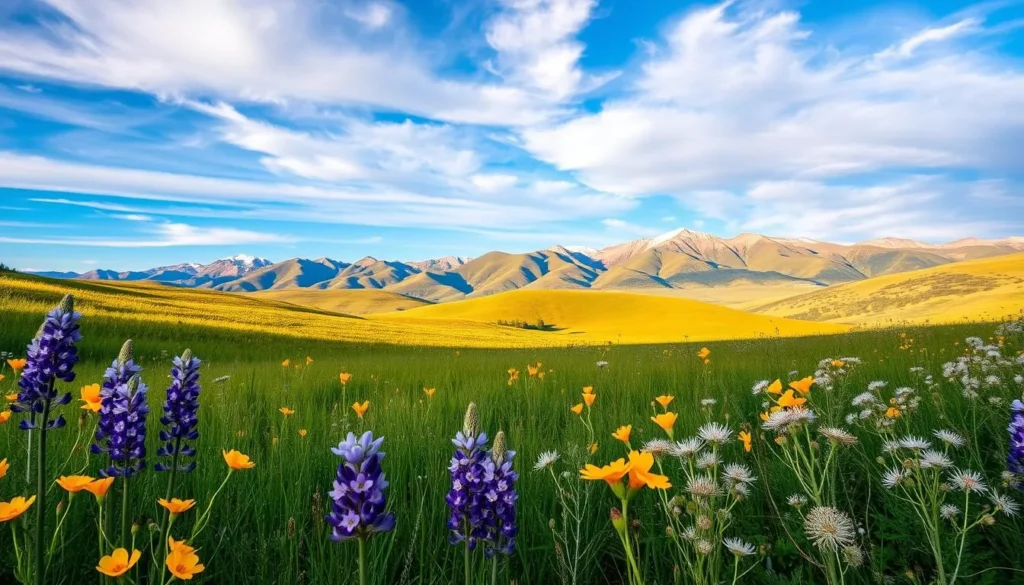
Outdoor Activities and Events
Spring is an excellent time for outdoor activities like hiking, with moderate temperatures and trails showcasing seasonal wildflowers. Many wineries host special spring release events, offering the first taste of new vintages. Local communities celebrate the season with spring festivals, farmers markets, and outdoor concerts beginning in late April and May.
By understanding the weather patterns and embracing the natural beauty of the Sierra Foothills during March to May, you can plan a memorable trip, enjoying the best that the region has to offer with minimal rain.
Summer in the Sierra Foothills (June-August)
You can experience the best of California during the summer in the Sierra Foothills. Summer is peak tourist season, with a packed calendar of events and festivals that cater to diverse interests. From music festivals to outdoor concerts and cultural celebrations, there’s something for everyone in the Sierra Foothills during the summer.
Managing the Heat and Dry Conditions
Summer brings hot, dry conditions to the Sierra Foothills, with temperatures regularly reaching 85-100°F from June through August. July and August are typically the hottest months, with occasional heat waves pushing temperatures above 100°F, especially at lower elevations. To make the most of your visit, plan your outdoor activities during the cooler parts of the day.
Summer Festivals and Events
The summer season brings a full calendar of festivals, county fairs, and outdoor concerts throughout the foothills communities. Many towns host Fourth of July celebrations with parades, fireworks, and community gatherings. County fairs showcase local agriculture, with competitions, exhibits, and entertainment.
| Event | Month | Location |
|---|---|---|
| Fourth of July Celebrations | July | Various towns |
| County Fairs | July-August | Foothills communities |
| Outdoor Concerts | June-August | Foothills communities |
Early Morning and Evening Activities
Early morning (before 10 am) and evening (after 6 pm) offer more comfortable temperatures for outdoor exploration. You can enjoy water activities like swimming, boating, and fishing during these times. Reservoirs and lakes offer boating, fishing, and water sports opportunities throughout the summer months.
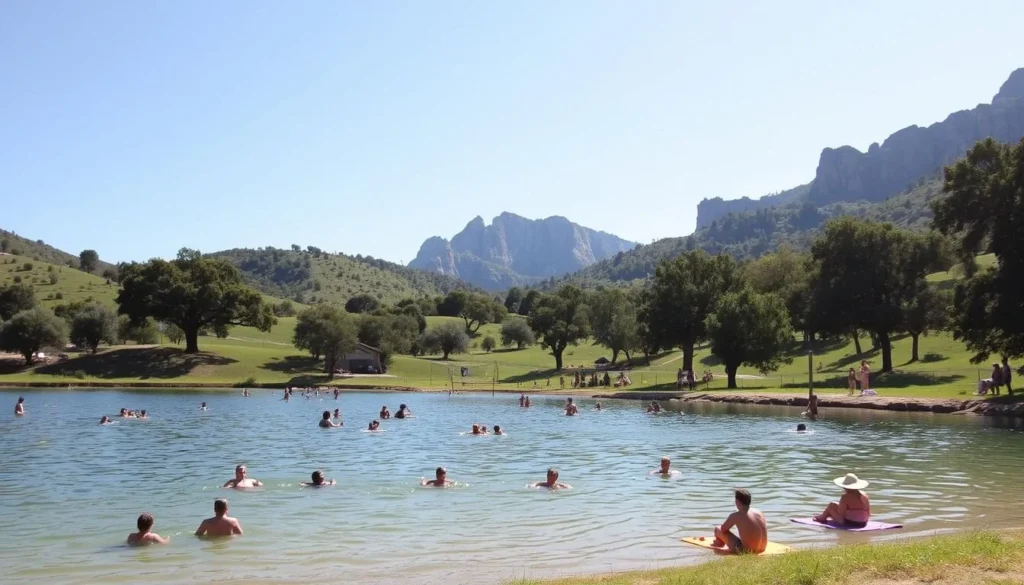
Fall in the Sierra Foothills (September-November)
As the summer heat fades, the Sierra Foothills transform into a haven of comfort and beauty during the fall season. You can enjoy pleasant weather with warm days and cool nights, making it an ideal time to explore the region.
Perfect Weather Windows
The fall season brings gradually cooling temperatures from September through November. September remains warm, with temperatures ranging from 60-90°F, while October brings comfortable daytime temperatures of 55-80°F with cool evenings.
Fall Colors and Scenery
The Sierra Foothills’ oak woodlands and deciduous trees display beautiful fall colors, typically peaking in late October through early November. The vineyards turn golden and red, creating a spectacular backdrop for photography and scenic drives.
Harvest Season Activities
Fall is harvest season in the foothills’ wine country, with numerous festivals and events celebrating the grape harvest. You can participate in activities like apple picking, cider tasting, and wine releases at various wineries and Apple Hill in El Dorado County.
Winter in the Sierra Foothills (December-February)
Winter in the Sierra Foothills is characterized by cooler temperatures and significant rainfall. This period, spanning from December to February, brings the region’s rainy season, with most of its annual precipitation occurring during these months.
Rainfall Patterns and Clear Days
The Sierra Foothills receive an average of 4-8 inches of rainfall per month during winter. Despite the rain, the region often experiences clear, sunny days between storm systems, offering opportunities for outdoor activities and scenic views.
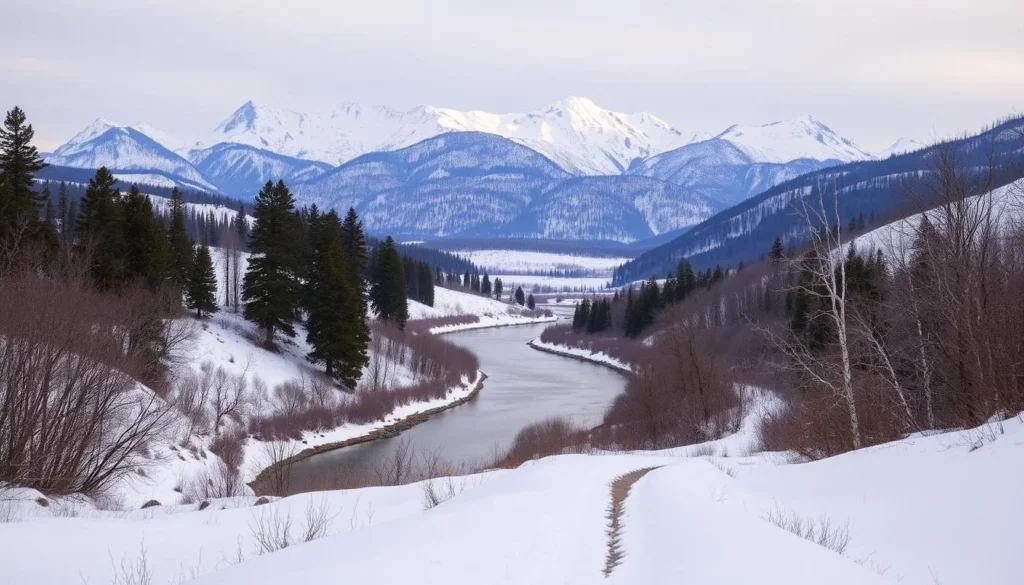
Winter Activities and Events
Winter offers a range of activities, including skiing and snowboarding in the nearby Sierra Nevada mountains. Local communities host holiday celebrations, such as Christmas parades and tree lighting ceremonies. Wine tasting continues year-round, with winter being a less crowded time to visit tasting rooms.
What to Pack for Winter Travel
When traveling to the Sierra Foothills in winter, it’s essential to pack layers for varying temperatures. A waterproof jacket, umbrella, and water-resistant footwear are recommended. Even on clear days, sunglasses and sunscreen are necessary.
| Month | Average Temperature | Average Rainfall |
|---|---|---|
| December | 45-60°F | 4-6 inches |
| January | 40-55°F | 5-7 inches |
| February | 45-60°F | 4-8 inches |
Monthly Temperature and Rainfall Guide
To make the most of your visit to the Sierra Foothills, it’s vital to understand the monthly temperature and rainfall guide. This knowledge will help you plan your activities and pack accordingly.
Average Monthly Temperatures
The Sierra Foothills experience significant temperature variations throughout the year. January is typically the coldest month with average highs of 50-55°F and lows of 30-35°F. In contrast, July and August are the warmest months with average highs of 90-95°F and lows of 60-65°F. Spring and fall months offer moderate temperatures, with April averaging 65-70°F highs and October averaging 70-75°F highs.
Precipitation Patterns
The foothills receive approximately 25-35 inches of annual precipitation, with over 80% falling between November and March. December and January are typically the wettest months, each averaging 5-7 inches of rainfall. Summer months (June-September) receive virtually no measurable precipitation in most years, although occasional thunderstorms can occur in late summer, bringing brief but intense rainfall.
Daylight Hours Throughout the Year
Daylight hours vary significantly throughout the year, affecting planning for outdoor activities. The longest days occur around the summer solstice in June, with approximately 15 hours of daylight. The shortest days occur around the winter solstice in December, with about 9.5 hours of daylight.
| Month | Average High Temp (°F) | Average Low Temp (°F) | Average Rainfall (inches) | Daylight Hours |
|---|---|---|---|---|
| January | 50-55 | 30-35 | 5-7 | 9.5 |
| April | 65-70 | 45-50 | 2-4 | 13 |
| July | 90-95 | 60-65 | 0-1 | 15 |
| October | 70-75 | 50-55 | 1-3 | 11 |
Gold Country Weather: Historical Towns and Mining Sites
Exploring the historic towns and mining sites in California’s Gold Country requires a good understanding of the local weather. The region encompasses numerous historical attractions that played crucial roles in California’s gold rush era.
Weather Impact on Gold Country Exploration
The weather conditions can significantly impact your experience when exploring these outdoor historical attractions. For instance, summer heat can make exploring outdoor mining sites uncomfortable during midday hours, especially in exposed areas without shade. In contrast, spring and fall offer ideal weather for exploring both indoor and outdoor gold country attractions.
Best Times to Visit Historic Sites
The best times to visit historic gold country sites are typically April-June and September-October. These periods offer pleasant temperatures, minimal rainfall, and comfortable conditions for walking tours of historic districts. Many historic towns host special events during these shoulder seasons, adding cultural experiences to your gold country exploration.
Wine Country Weather: Sierra Foothills AVAs
The Sierra Foothills wine country encompasses several American Viticultural Areas (AVAs), including El Dorado, Amador, Calaveras, and Sierra Foothills AVAs, each with its distinct wine profile. Understanding the climate conditions and seasonal events in this region is crucial for a memorable wine tasting experience.
Climate Conditions for Wine Tasting
The Sierra Foothills region’s climate creates ideal conditions for growing certain grape varieties, particularly Zinfandel, Barbera, and Syrah. The significant day-to-night temperature swings contribute to the complexity and quality of the wines produced here. Weather conditions can significantly impact your wine tasting experience throughout the year.
For instance, summer brings warm to hot temperatures, which can affect wine tasting as higher temperatures can alter the perception of flavors and aromas. Conversely, spring and fall provide ideal climate conditions for wine tasting, with moderate temperatures that allow wines to be served and enjoyed at their optimal temperatures.
Seasonal Wine Events and Festivals
The Sierra Foothills wine region hosts numerous seasonal events and festivals throughout the year, making it a vibrant destination for wine enthusiasts. The harvest season, particularly in September and October, is very active, with crush events, harvest festivals, and special winery tours.
Spring brings “futures” weekends and new release events as wineries showcase their latest vintages. Summer features outdoor concerts, vineyard dinners, and evening events that take advantage of the long daylight hours. Winter brings special holiday-themed events, barrel tastings, and more intimate experiences at many wineries.
Outdoor Recreation Weather Guide
The Sierra Foothills are a haven for outdoor enthusiasts, with activities available throughout the year. The region’s diverse landscape and climate offer a range of experiences that are shaped by the season.
Hiking and Trail Conditions by Season
Hiking trails in the Sierra Foothills are accessible year-round, but conditions vary significantly with the season. In the spring (April-May), wildflowers bloom, and temperatures are moderate, making it an ideal time for hiking. However, some trails may be muddy after winter rains.
Water Activities on Lakes and Rivers
The region’s lakes and rivers offer opportunities for water activities that are highly seasonal and weather-dependent. Summer (June-September) is the prime time for swimming, rafting, kayaking, and boating when water temperatures are warmest.
Wildlife Viewing Opportunities
Wildlife viewing opportunities vary by season, with different species active at different times of the year. In the spring, bird migration and newborn mammals make it an excellent time for wildlife photography. Winter brings bald eagles to foothill reservoirs and lakes, creating unique bird-watching opportunities.
Planning Around Major Events and Peak Tourist Seasons
To make the most of your visit to the Sierra Foothills, understanding the dynamics of major events and tourist seasons is crucial. The region experiences distinct tourist seasons that affect crowds, accommodation availability, and overall visitor experience.
High Season vs. Off-Season Benefits
The Sierra Foothills have a peak tourist season during the summer months (June-August), characterized by larger crowds and higher accommodation rates. However, this period also offers extended hours at attractions and more scheduled events. In contrast, visiting during the shoulder seasons (April-May and September-October) provides a balance of good weather and fewer crowds. Winter (November-March, excluding holiday periods) is considered the off-season, offering the lowest rates and least crowded conditions.
While high season brings excitement and a wide range of activities, off-season travel has its advantages, including lower prices and more personalized service. Local accommodations often offer significant discounts during off-peak periods, sometimes 30-50% lower than summer rates.
Event Calendar Considerations
The Sierra Foothills host numerous annual events that can significantly impact visitor numbers and accommodation availability. Major events like county fairs, music festivals, and holiday celebrations can create localized periods of high visitation even during shoulder seasons. It’s essential to check local event calendars for the specific communities you plan to visit and book accommodations 3-6 months in advance if your visit coincides with major regional events.
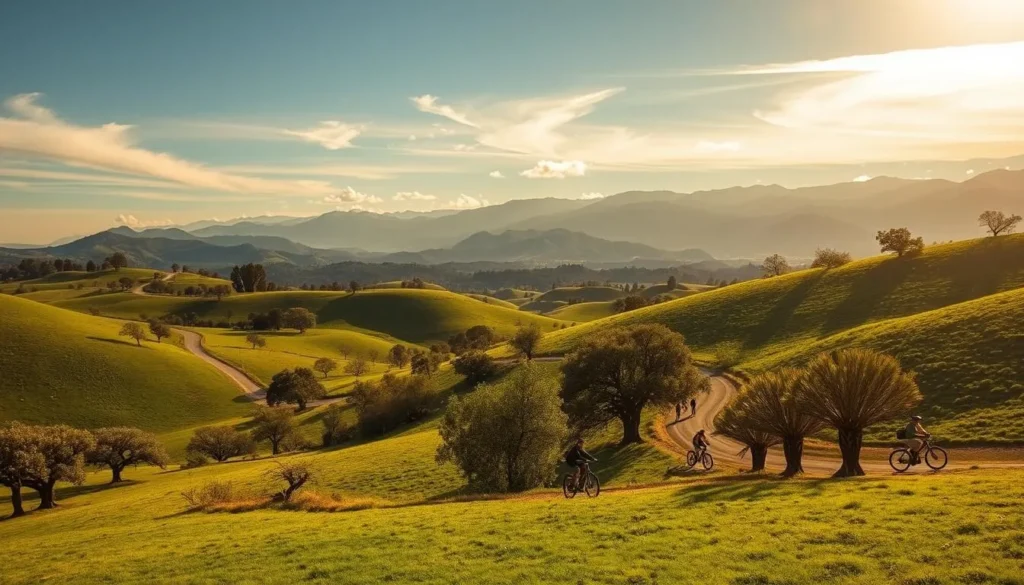
Weather Impact on Popular Tourist Attractions
Understanding the weather conditions is crucial for making the most of your visit to Sierra Foothills’ attractions. The region’s diverse climate and weather conditions can significantly impact the visitor experience.
State Parks and Natural Landmarks
The region’s state parks and natural landmarks are particularly weather-sensitive, with seasonal variations affecting accessibility and enjoyment. For instance, summer heat can make midday visits to exposed attractions like Marshall Gold Discovery State Historic Park uncomfortable without proper sun protection. In contrast, spring offers ideal conditions for visiting natural landmarks, with comfortable temperatures and natural features like waterfalls at their most impressive.
Historic Towns and Cultural Sites
The region’s historic towns and cultural sites offer both indoor and outdoor experiences that are affected differently by weather conditions. Summer brings extended hours to many cultural attractions, though midday heat can make walking tours of historic districts less comfortable. On the other hand, winter offers a more intimate experience at indoor museums and cultural sites, with fewer visitors and often more attention from staff and docents.
Comparing Sierra Foothills Weather to Nearby Regions
When planning a trip to the Sierra Foothills, understanding how its weather compares to nearby regions can be invaluable. This knowledge helps you make informed decisions about when to visit and how to pack.
Sierra Nevada Mountains vs. Foothills
The Sierra Nevada mountains experience significantly different weather patterns than the foothills. Summer temperatures in the high Sierra are typically 15-25°F cooler than in the foothills, making them a refreshing escape during hot periods. In contrast, winter brings heavy snow to the Sierra Nevada mountains, with many areas receiving 300-500 inches annually, while the foothills primarily receive rain.
- The Sierra Nevada’s higher elevations have a shorter summer season, with snow possible from October through May.
- The transition zone between mountains and foothills creates interesting weather boundaries.
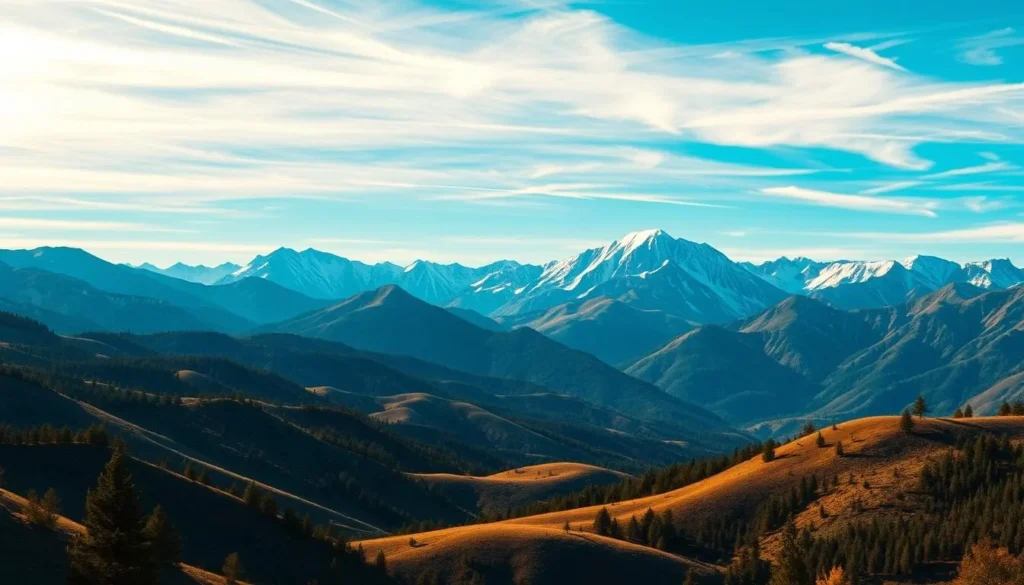
Central Valley vs. Foothills
The Central Valley experiences more extreme temperatures than the foothills, particularly during summer. Summer temperatures in the Central Valley regularly exceed 100°F, often 5-15°F hotter than the foothills. In winter, the Central Valley is prone to dense tule fog that can persist for days or weeks, while the foothills typically remain above this fog layer.
- The foothills receive significantly more rainfall than the Central Valley.
- This results in greener landscapes and different vegetation patterns.
Understanding these differences can help you plan a more enjoyable trip, whether you’re looking to escape the heat or avoid the fog.
Packing Tips for Different Seasons
The Sierra Foothills’ climate varies significantly across seasons, making it essential to pack accordingly. Understanding the seasonal weather conditions will help you prepare for a comfortable and enjoyable trip.
Clothing Essentials
Layered clothing is a must due to the region’s significant day-to-night temperature swings. For summer, focus on lightweight, breathable clothing, but include a light jacket or sweater for cool evenings. In contrast, winter requires waterproof outerwear, warm layers, and suitable footwear for potentially wet conditions.
Gear and Equipment
Weather-related gear requirements vary by season and planned activities. For instance, hikers should consider trekking poles during winter and spring when trails may be muddy or slippery. A good daypack with hydration capability is essential year-round, especially during hot summer months.
| Season | Clothing | Gear/Equipment |
|---|---|---|
| Summer | Lightweight, breathable clothing, light jacket/sweater | Sun protection, swimming gear, daypack with hydration |
| Winter | Waterproof outerwear, warm layers, suitable footwear | Trekking poles, waterproof bags |
| Spring/Fall | Medium-weight, layered clothing | Trekking poles (for muddy trails), binoculars, camera equipment |
Weather Hazards and How to Prepare
To ensure a safe and enjoyable visit to the Sierra Foothills, it’s vital to understand the weather hazards and take necessary precautions. The region experiences several weather-related hazards that visitors should be aware of when planning their trip.
Fire Season Awareness
Fire season typically runs from June through October, with the highest risk period usually in August and September. During high fire danger periods, certain activities may be restricted, including campfires, barbecues, and access to some trails and recreation areas. Stay informed about current fire conditions through CalFire and local forest service announcements.
Flash Floods and Storm Safety
The rainy season (November-March) can bring flash flooding, particularly in canyon areas and near streams and rivers. Heavy rainfall can cause rapid water level rises, creating dangerous conditions. Avoid crossing flowing water during storms and be cautious around riverbanks after heavy rain. Storm safety includes staying away from trees during high winds and being aware of potential road closures due to flooding or fallen trees.
Heat-Related Precautions
Summer heat can reach dangerous levels, particularly in July and August when temperatures may exceed 100°F. To manage heat risks, stay hydrated, avoid strenuous outdoor activities during the hottest part of the day (12-4 pm), and seek shade. Recognizing the signs of heat exhaustion and heat stroke is important for all summer visitors.
Conclusion: Making the Most of Your Sierra Foothills Visit
Your Sierra Foothills adventure begins with understanding the region’s weather, ensuring a trip that’s tailored to your needs. By planning your trip around the weather patterns outlined in this guide, you’ll maximize your experience and create memories to last a lifetime.
The Sierra Foothills offer year-round appeal, but timing your visit to align with your preferred activities and weather preferences will enhance your experience. For most travelers, spring (April-May) and fall (September-October) provide the optimal balance of pleasant weather, natural beauty, and moderate crowd levels.
Regardless of when you visit, understanding the region’s weather patterns helps you pack appropriately and plan suitable things to do. With proper planning and weather awareness, your Sierra Foothills adventure will be a memorable highlight of your California travels. Consider combining your foothills adventure with visits to complementary regions to experience California’s diverse landscapes.
The above is subject to change.
Check back often to TRAVEL.COM for the latest travel tips and deals.
